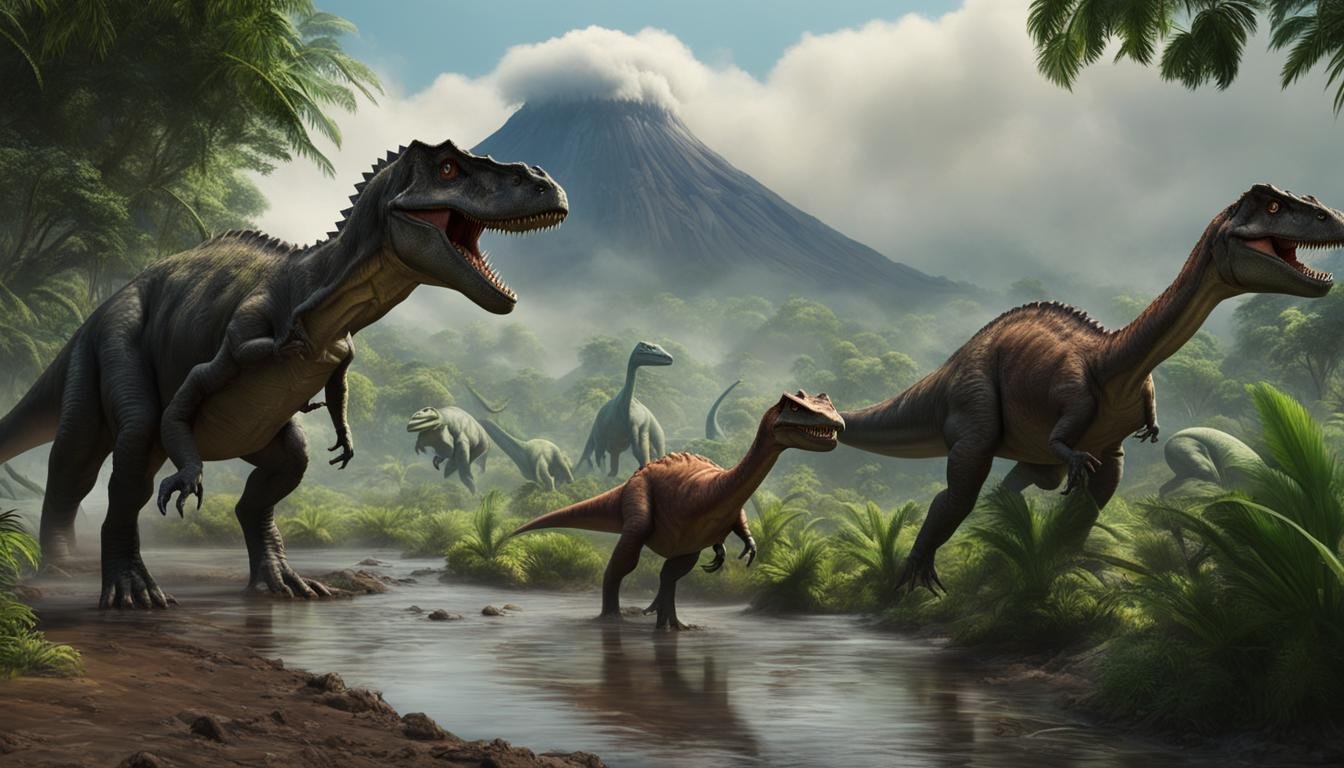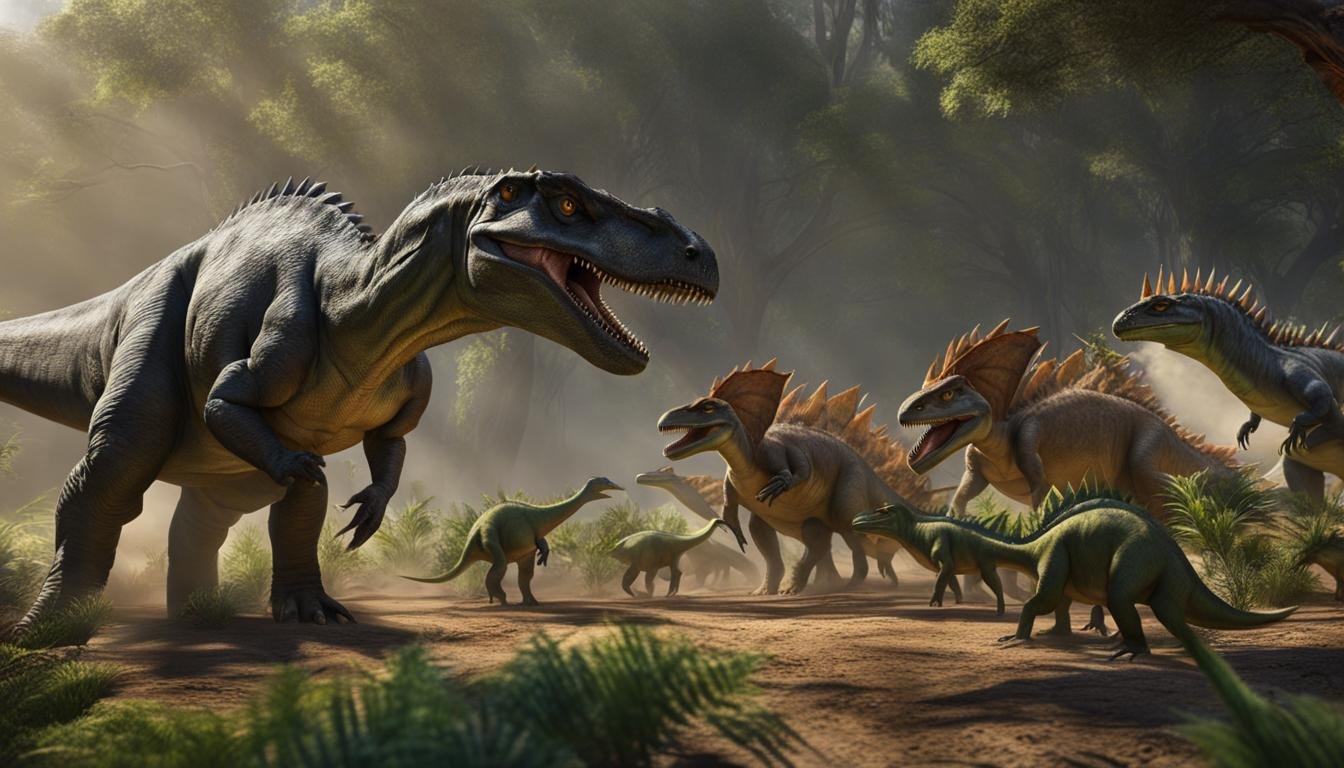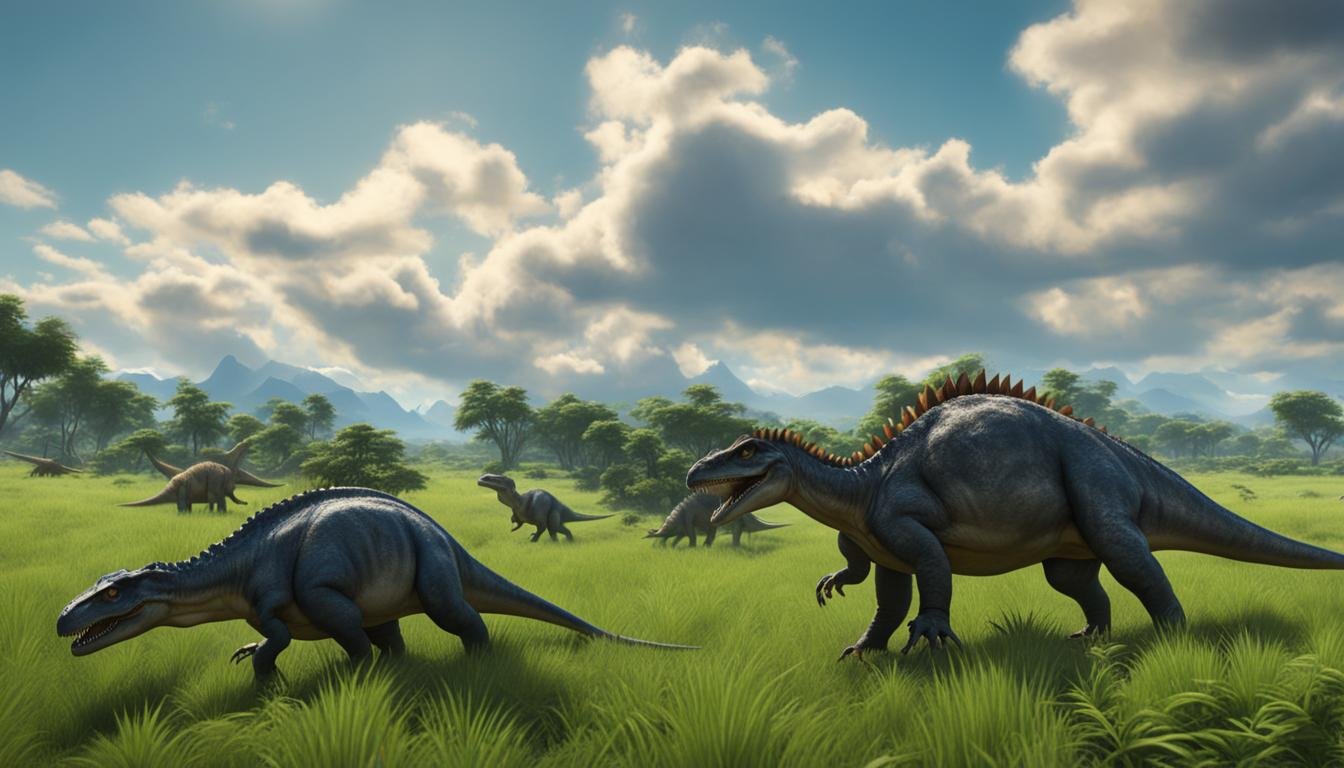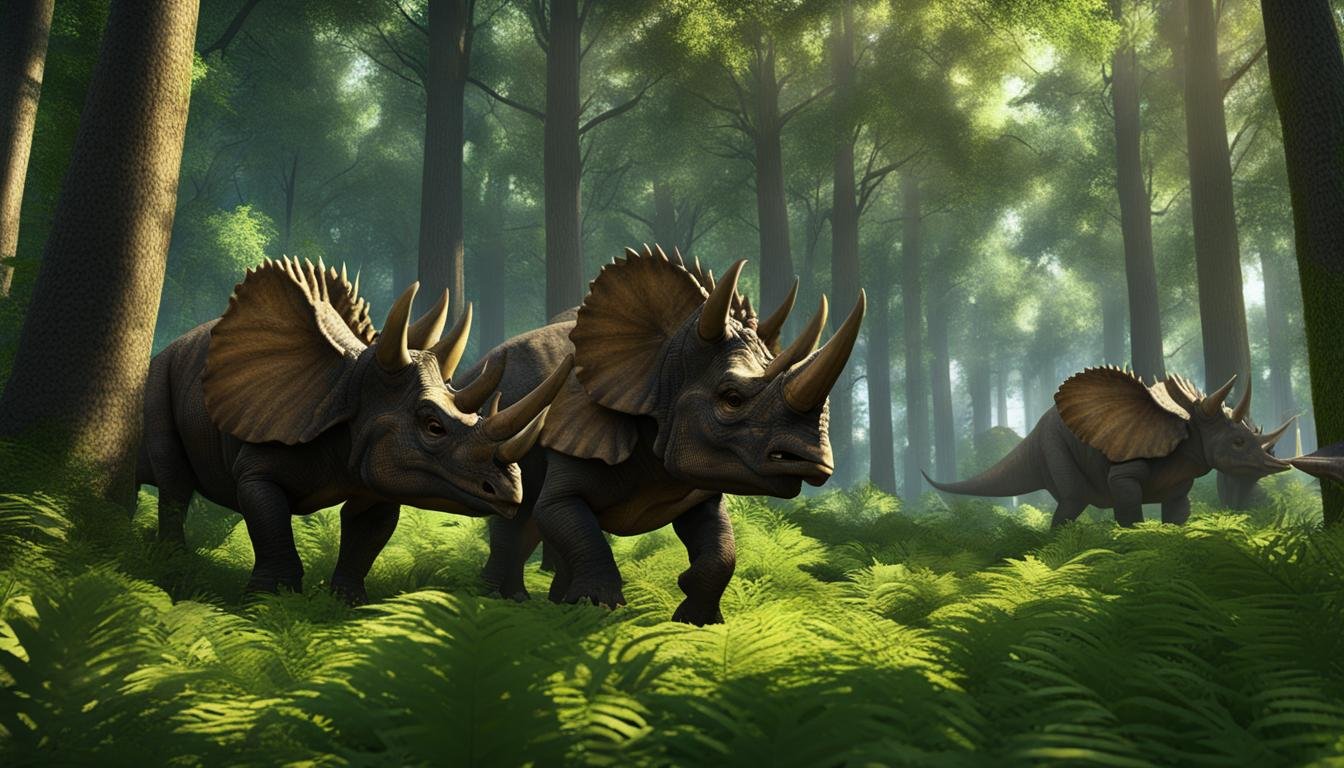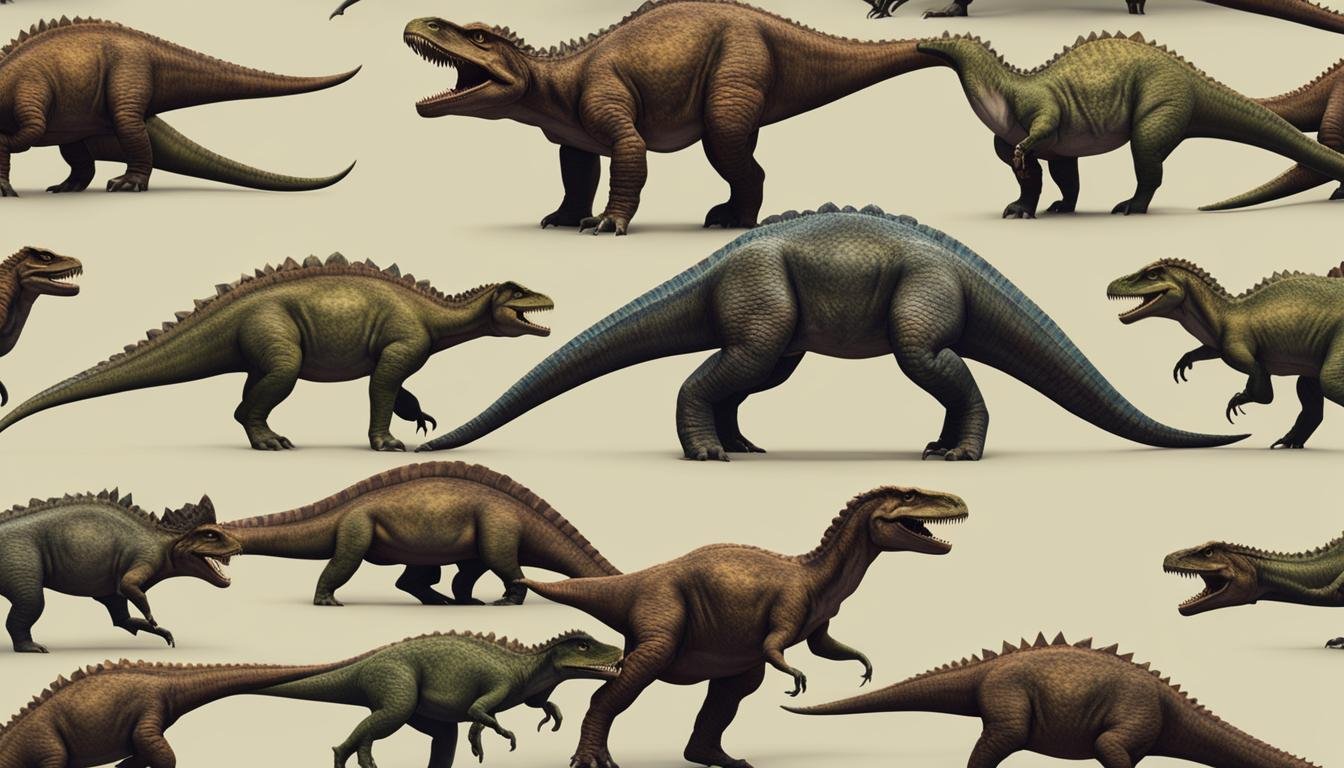A new research study has revealed fascinating insights into dinosaur social behavior and its relationship with the environment. By analyzing fossils, scientists have uncovered evidence of social structures and organized herds in some of the earliest dinosaurs. These findings challenge previous notions of dinosaur aggression and territoriality, highlighting the influence of ecological factors on their social adaptations and behavior.
| Key Takeaway | Detail |
|---|---|
| Ecological Influences | The ecological environment plays a significant role in shaping dinosaur social behavior and their evolutionary adaptations. |
| Fossil Evidence of Social Behavior | Fossils indicate the presence of organized herds and cooperative behaviors in early dinosaurs. |
| Impact of Climatic Changes | Changes in climate and the availability of resources have a profound impact on group dynamics and territorial behaviors in dinosaurs. |
| Predator-Prey Interactions | The interactions between predators and prey, along with social hierarchies, influence the herding responses of dinosaurs. |
| Migration and Ecosystem Dynamics | The migration patterns of dinosaurs and the dynamics of their ecosystems reveal their adaptability and survival strategies. |
Climatic Impact and Resource Availability
The impact of climate and resource availability on dinosaur social behavior is a fascinating area of study. The research on Mussaurus patagonicus fossils found near a lake has shed light on how these factors influenced group dynamics, territoriality, and even seasonal behavior changes.
One of the key findings of the study is that water sources played a vital role in shaping dinosaur social behavior. The presence of water near the fossil site indicates that access to this resource was crucial for the survival and social organization of these dinosaurs. Changes in climate and the availability of water sources could have influenced their movements, foraging patterns, and interactions within their herds.
“The presence of water near the fossil site indicates that access to this resource was crucial for the survival and social organization of these dinosaurs.”
Additionally, the study suggests that resource availability, such as food and vegetation, could have affected dinosaur group dynamics. In periods of scarcity, dinosaurs may have been more territorial and competitive, leading to changes in their social structures. This supports the idea that dinosaurs adapted their behavior in response to changing environmental conditions to maximize their chances of survival.
| Factors | Influence on Dinosaur Social Behavior |
|---|---|
| Water sources | Crucial for survival and social organization |
| Climate changes | Affected movements, foraging patterns, and herd interactions |
| Resource availability | Influenced group dynamics and territoriality |
In conclusion, the study on Mussaurus patagonicus fossils provides valuable insights into the impact of climate and resource availability on dinosaur social behavior. Water sources were crucial for their survival and social organization, while changes in climate and resource availability affected their movements and interactions within their herds. Understanding the climatic impact and resource availability can help us unravel the complexities of dinosaur social behavior and their adaptations to their environment.
Stay tuned for the next section, where we explore the fascinating interactions between predators and dinosaurs, and how they shaped social hierarchies within dinosaur herds.
Paleobiological Studies and the Impact of Environment on Dinosaur Social Behavior
When it comes to understanding the impact of environment on dinosaur social behavior, paleobiological studies have proven to be invaluable. Fossil evidence has provided insights into the ways in which environmental stressors influenced the behavior of dinosaurs. One significant finding is the herding response observed in many dinosaur species. The presence of herd structures suggests that dinosaurs may have formed herds as a means to better defend against predators and to cope with challenging environmental conditions.
One fascinating aspect of dinosaur social behavior is the existence of social hierarchies within herds. Evidence of dominant individuals and cooperative behaviors has been uncovered through the study of dinosaur fossils. This suggests that dinosaurs not only formed social groups but also exhibited complex social interactions, a clear indication of the impact of environment on their behavior.
Another aspect to consider is the role of predator-prey interactions in shaping dinosaur social behavior. It is believed that the presence of predators played a significant role in the formation of herds as a defense mechanism. By living in groups, dinosaurs could better protect themselves from predators, highlighting the profound influence of the environment on their social dynamics.
Paleobiological Studies and Environmental Stressors
One of the most compelling findings from paleobiological studies is the link between environmental stressors and dinosaur social behavior. The presence of fossil evidence suggests that dinosaurs faced numerous challenges in their environment, such as food scarcity and changing climate conditions. These stressors likely influenced their herding response, social hierarchy, and predator-prey interactions.
“The impact of environment on dinosaur social behavior is evident in their responses to environmental stressors and their strategies for survival,” said Dr. Anna Roberts, a paleobiologist involved in the research. “Our findings suggest that dinosaurs exhibited complex social behaviors as a means to adapt to their ever-changing environment.”
The findings from paleobiological studies provide a deeper understanding of the intricate relationship between dinosaurs and their environment. By examining fossil evidence, researchers can piece together the puzzle of dinosaur social behavior, shedding light on their adaptations and responses to ecological pressures. These insights not only enhance our knowledge of these fascinating creatures but also provide valuable information about the dynamics of ancient ecosystems and the evolutionary processes that shaped their behavior.
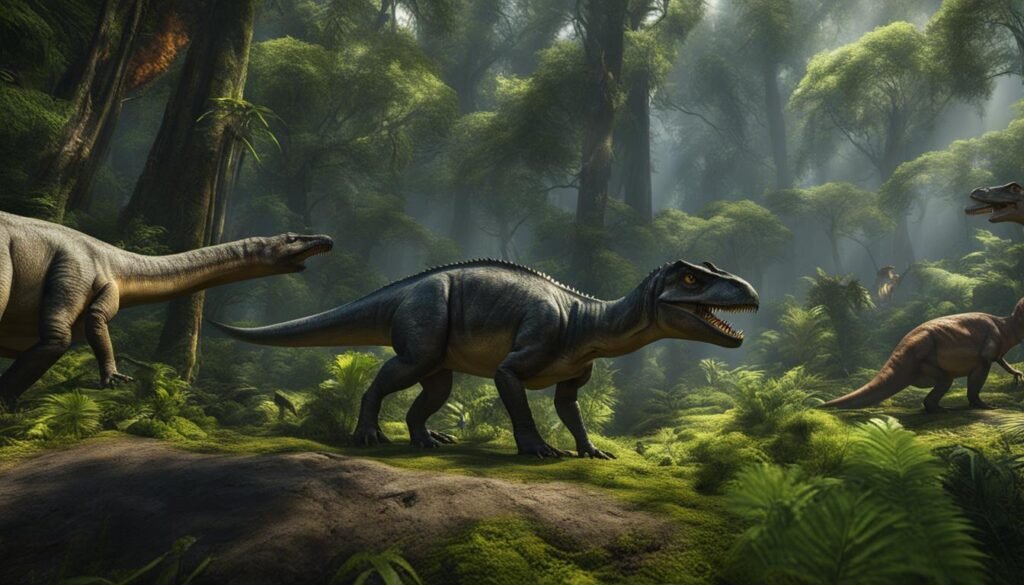
Migration Patterns and Ecosystem Dynamics
Fossilized trackways provide valuable insights into the migration patterns and ecosystem dynamics of dinosaurs. These ancient footprints offer a glimpse into the movements and behaviors of these prehistoric creatures as they navigated their environments. By studying these trackways, scientists have been able to piece together important information about the routes taken by dinosaurs and the factors that influenced their movements.
The migration patterns of dinosaurs can be seen in the fossilized trackways that stretch across vast distances. These tracks indicate that dinosaurs traveled in search of food, water, and suitable habitats. By analyzing the patterns and concentration of trackways, scientists can infer the density of dinosaur populations and gain insights into their survival strategies.
The dynamic nature of dinosaur ecosystems is evident in the diverse habitats and territories indicated by fossilized trackways. Different species of dinosaurs left behind distinct footprints, suggesting the presence of specific ecological niches occupied by these ancient creatures. The distribution and arrangement of trackways provide evidence of how dinosaurs interacted with their environment and adapted to changes in their ecosystems over time.
The Migration Patterns of Three Key Dinosaur Species
| Dinosaur Species | Migration Patterns |
|---|---|
| Triceratops | Traveled in herds across vast grasslands in search of food and water sources. |
| Tyrannosaurus Rex | Roamed large territories, following their prey and adapting to changing food availability. |
| Hadrosaurs | Migrated seasonally between nesting grounds and foraging areas, optimizing their chances of survival. |
The table above provides a brief overview of the migration patterns of three key dinosaur species. It is important to note that these patterns may vary across different regions and time periods, as dinosaurs inhabited diverse environments and responded to unique ecological pressures.
Overall, the study of migration patterns and fossilized trackways allows us to gain a better understanding of how dinosaurs interacted with their environment and adapted to changing conditions. By unraveling these ancient migratory routes and ecosystem dynamics, scientists can piece together the puzzle of dinosaur behavior and shed light on the fascinating world of these extinct giants.
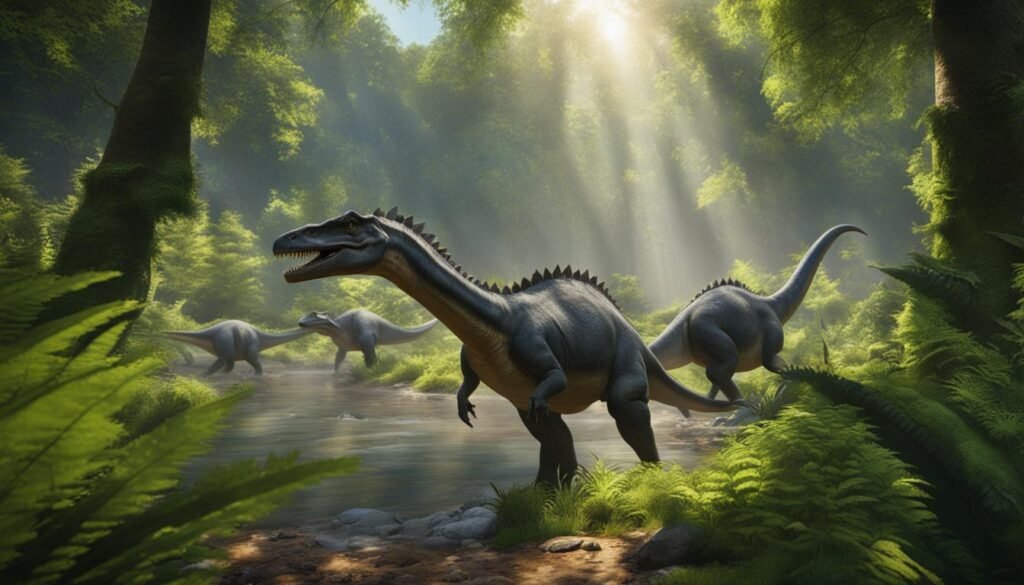
Conclusion
The study of dinosaur social behavior in relation to their environment has provided valuable insights into their adaptations and responses to ecological pressures. Dinosaurs exhibited complex social behaviors and adapted to their ecological niche to survive in diverse environments.
Food scarcity response was a significant factor influencing dinosaur behavior. Nesting behavior and group hunting strategies were employed to ensure the availability of food resources. Additionally, water source availability played a crucial role in their social dynamics, with dinosaurs strategically organizing themselves around water sources.
Social bonding within dinosaur herds was essential for survival. Territorial disputes and landscape influences shaped their foraging behavior, as dinosaurs established and defended their territories. These behaviors were crucial for maintaining access to resources and establishing social hierarchies.
The impact of the environment on dinosaur social behavior highlights the importance of understanding the ecological influences on ancient ecosystems. Dinosaurs exhibited remarkable adaptability and developed various strategies to cope with environmental pressures. This knowledge gives us valuable insights into the evolutionary processes that shaped the behavior of these fascinating creatures.

